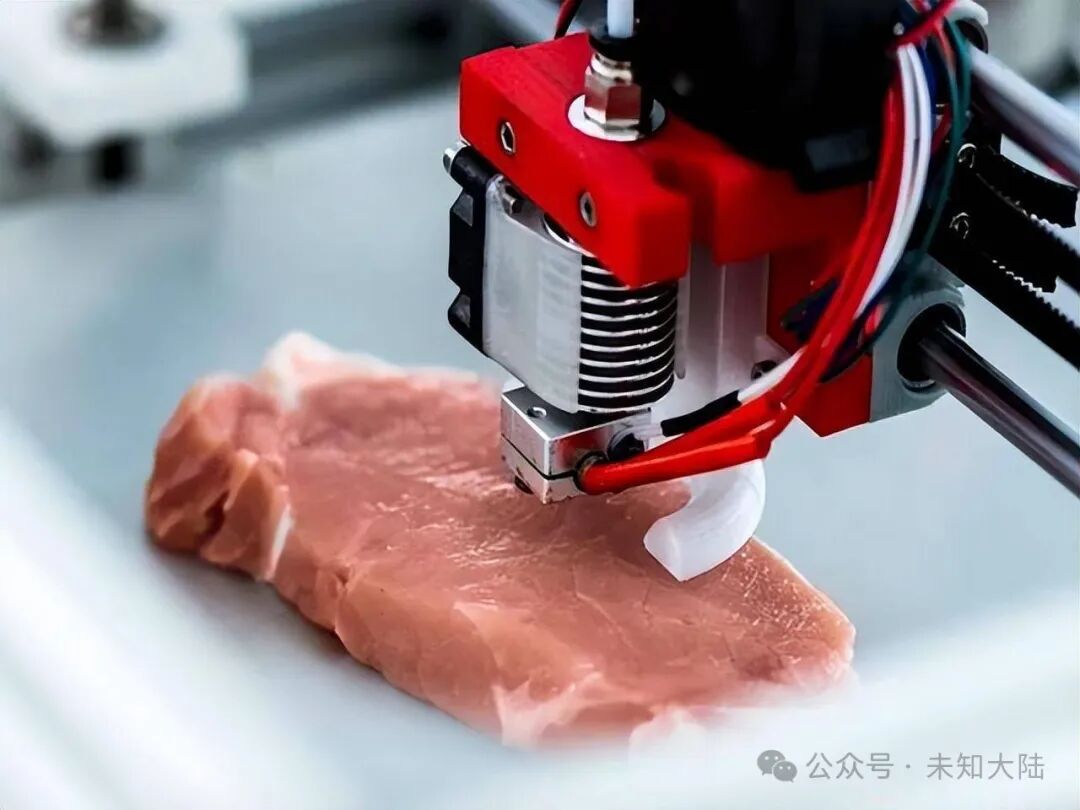At the intersection of technology and food, 3D printed meat is touted as the future’s salvation: sustainable, ethical, and devoid of bloody slaughter. However, when we peel back this layer of sci-fi glamour, does it truly meet humanity’s real needs, or is it merely a bubble concocted by capital and idealism? Let’s shift our perspective—not from the lofty heights of environmentalists or through the rose-tinted glasses of tech enthusiasts, but from the ordinary diner at the table, examining this so-called “demand” from the underlying logic of human desire.

The Essence of Meat: Desire, Not a Problem
The history of human meat consumption is not a mathematical problem to be solved, but a carnival of sensory and cultural experiences. The allure of meat lies in its juices, chewiness, and the moment when fat melts on the tongue—these are desires imprinted in our genes through evolution. Supporters of 3D printed meat attempt to frame meat consumption as a “problem”: environmental degradation, animal suffering, and resource scarcity. They present printers, claiming to “solve” it with cell cultures or plant pastes. Yet, the reality is that most people, when biting into a steak, are not thinking about carbon emissions but rather about satisfaction. The premise of 3D printed meat is flawed—it targets not a demand but a certain moral anxiety.
Consider the data: the global meat market was valued at $1.4 trillion in 2022, while meat alternatives accounted for only $5.8 billion, a fraction of the total. Even with rising environmental concerns, ordinary consumers continue to vote with their wallets for traditional meat. The “demand” for 3D printed meat did not naturally arise from the dining table but was forcibly implanted by laboratories and investment presentations. It attempts to persuade the emotional with rationality, forgetting that the core of human diet has never been rational.
The Vanity of Technology: The Arrogance of Printing
The technology behind 3D printed meat dazzles to the point of vertigo: cells cultivated in bioreactors, printers producing lifelike “steaks.” Aleph Farms boasts about its cultured meat, while Redefine Meat showcases its plant-based fibers, capable of “printing” hundreds of kilograms per hour. But so what? The sophistication of technology does not prove the authenticity of demand. Historically, how many flashy products have ultimately become museum exhibits—maglev trains, Google Glass, all fall into this category.
Ironically, this technology is essentially a self-indulgence of the elite. It requires massive capital (in 2021, alternative proteins received $1.2 billion in investment), complex supply chains, and high-end equipment, but who does it ultimately serve? Is it the gourmets in Michelin-starred restaurants, or the tech believers in Silicon Valley? What about ordinary people? They are not going to pay for a piece of printed meat at $50 per kilogram when street skewers cost just a few bucks; this expensive “future” seems ridiculous and detached from reality. 3D printed meat is not about feeding the masses but about entertaining capital and innovators.
The Truth of False Demand: The Frenzy of Capital and Cultural Disfocus
Why is 3D printed meat so hyped? The answer lies in the ledgers of venture capital. Over the past decade, food technology has become a hot trend; when Beyond Meat went public, its market value soared to $10 billion, and 3D printed meat is merely a new branch of this wave. Investors need a story, and environmentalism and technology make for a perfect script. Thus, prototypes in laboratories are packaged as “disruptors,” the media follows suit, while consumers are left out—no one asks them if they actually want to eat it.
Looking at it from a cultural perspective, the significance of meat varies greatly around the world: Americans love hamburgers, Japanese cherish sashimi, and Chinese cannot live without braised pork. 3D printed meat attempts to flatten these differences with a single “solution,” ignoring the diversity and resilience of dietary cultures. It assumes that humanity will abandon millennia of tradition to embrace a substitute produced by a machine, which is not only naive but also arrogant.
Where is the Real Demand?
If there is a demand, it is not for 3D printed meat itself, but for the motivations behind it: sustainability and food security. However, these issues already have more pragmatic solutions. Plant-based meats (like Impossible Foods) are already affordable and widespread, and traditional agriculture is optimizing efficiency. 3D printed meat, however, resembles an expensive experiment, addressing only the imaginations of the tech circle rather than the plates of humanity.
Indeed, the climate crisis is urgent, and the food pressure of 9.7 billion people by 2050 cannot be ignored. Yet, the costs of 3D printed meat (cultured meat at $50-100/kg), its taste (still not perfect), and the challenges of scaling (industrialization is still far off) make it seem more like a distant utopia rather than an immediate answer. Instead of spending hundreds of millions on developing printers, it would be better to invest in improving existing livestock farming or promoting vegetarianism—at least these are closer to the stomachs of ordinary people.
Conclusion: False Demand or False Future?
3D printed meat is not without value; it may be a fragment of the future. But for now, it resembles a performance: a dance of technological showmanship, capital profit-seeking, and environmental slogans, with few willing to pay for a ticket. The real demand comes from human taste buds, habits, and survival, not from the white coats of laboratories. Perhaps one day, when printed meat is cheap enough to fit into street-side pancake stalls, it will shed the label of “false demand.” But until then, it remains an expensive sci-fi dream—visually appealing but unappetizing.
What do you think? Is it humanity’s stomach that is wrong, or is it the direction of 3D printed meat that is mistaken?
